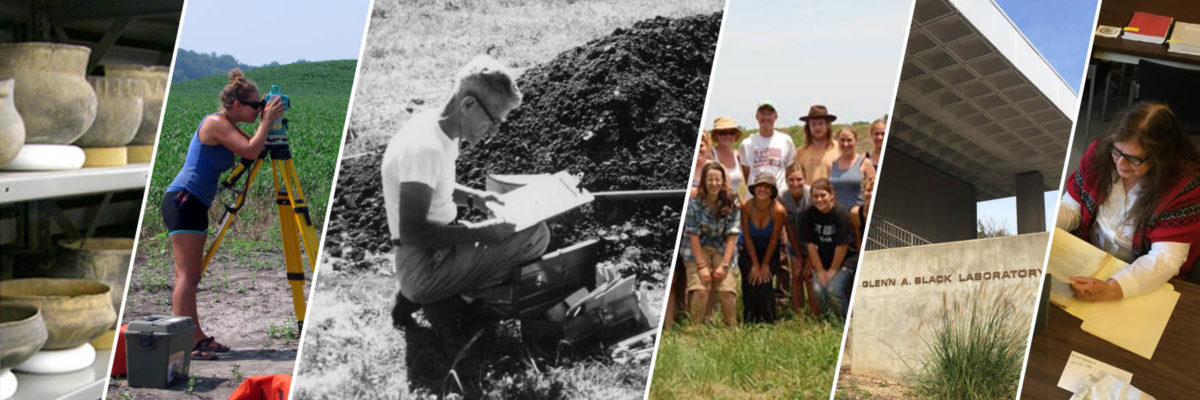by April Sievert, Director
I spotted this pot-sherd as our curation assistant, Hannah Ballard (IU’18), was inventorying our ‘type’ collection of ceramics from Angel Mounds, the 13th century town on the Ohio River near Evansville. The piece, from the broad rim of a large plate, boasts a signature decorating technique—negative painting. Potters at Angel Mounds made plates of clay tempered with fine pieces of shell, and applied multiple layers of slip or pigment to create designs around the rim in black, red and buff-clay colors. While I’m used to seeing painted sherds with crossed-circle and geometric designs, this was the first time I’d actually seen one of the two sherds from Angel that sport a bi-lobed arrow/bowstring motif. The red arrow shows through a layer of black. The motif is a very special one for Mississippian people, seen far and wide across the Mississippi Valley and Southeast. Finding the design at Angel Mounds underscores how far afield people of Angel communicated.
Seeing this design reminded me of another Mississippian collection that I documented for the Smithsonian Institution’s Repatriation Office nearly 30 years ago. That site is Spiro, located along the Arkansas River in far eastern Oklahoma. Spiro was infamously looted in the 1930s, and later excavated as part of the Works Projects Administration, just like Angel. At Spiro, the motif had been carved into the outsides of whelk shells that hail from the Gulf of Mexico. Bi-lobed designs also show up also on hair ornaments, rock art, and rendered in native copper spread far across the Southeast.
But what does the motif mean? Association with the bow and arrow seems pretty clear, with a possibility that the lobes reflect back to the atlatl, or spear thrower. It could also be indirectly reflective of a traditional Siouan culture hero known as Redhorn, or ‘he who gets hit with deer lungs’. Professor Robert Hall was an Indigenous symbolic archaeologist from Wisconsin, and one of my graduate mentors, who had made this connection. Could the two lobes in the design harken back to an image of deer lungs attached to a trachea? We can’t really know for sure, but it is clear is that ancient Indigenous people along the Ohio engaged in a system of ceremony, communication, and artistry that far exceeds the confines of an agricultural site in the central Ohio Valley.


